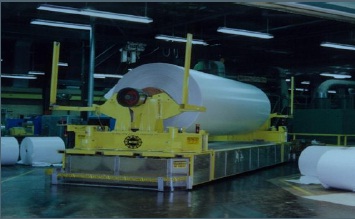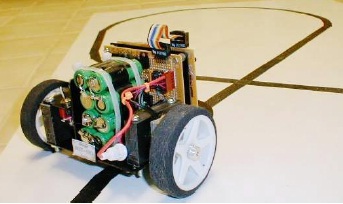





Published on Feb 14, 2025
The following paper gives brief explanation on the mobile robots and its applications in the various purposes with great efficiency and precision in the fields of security, maintenance, modern agricultural techniques, terrain detection and sensing, usage of multirobot its docking and manipulating capabilities and heavy duty applications like automated assembly in aircraft bodies, etc.
The development of intelligent surveillance systems is an active research area. In this context, mobile and multi-functional robots are generally adopted as means to reduce the environment structuring and the number of devices needed to cover a given area. The feasibility of the approach is demonstrated through experimental tests using a multisensory platform equipped with a monocular camera, a laser scanner, and an RFID device. Real world applications of the proposed system include surveillance of wide areas (e.g. airports and museums) and buildings, and monitoring of safety equipment.
Secondly new version of the JL series reconfigurable multi-robot system called JL-2. By virtue of the docking manipulator composed of a parallel mechanism and a cam gripper, every mobile robot in the JL-2 system is able to not only perform tasks in parallel, e.g. moving and grasping, but also dock with each other even if there are large misalignments between two robots. Long-range terrain perception has a high value in performing efficient autonomous navigation and risky intervention tasks for field robots, such as earlier recognition of hazards, better path planning, and higher speeds. However, Stereo-based navigation systems can only perceive near-field terrain due to the nearsightedness of stereo vision. Many near-to-far learning methods, based on regions’ appearance features, are proposed to predict the far-field terrain.
Mobile robots are the objects which move around in their environment and are not fixed to one physical location. They consist of instrument panels like LASER scanners, monocular cameras and RFID devices for sensing the terrain.They can be controlled by Bluetooth, wireless network of pc, a wireless remote control microcontroller, etc. They are used for reasons like security, maintenance, industrial transports, in military, etc. Mobile robots are the focus of a great deal of current research and almost every major university has one or more labs that focus on mobile robot research. Mobile robots are also found in industry, military and security environments. They also appear as consumer products, for entertainment or to perform certain tasks like vacuum.
An automated guided vehicle or automatic guided vehicle (AGV) is a mobile robot that follows markers or wires in the floor, or uses vision or lasers. They are most often used in industrial applications to move materials around a manufacturing facility or a warehouse. Application of the automatic guided vehicle has broadened during the late 20th century and they are no longer restricted to industrial environments. Automated guided vehicles (AGVs) increase efficiency and reduce costs by helping to automate a manufacturing facility or warehouse objects behind them in trailers to which they can autonomously attach.
The trailers can be used to move raw materials or finished product. The AGV can also store objects on a bed. The objects can be placed on a set of motorized rollers (conveyor) and then pushed off by reversing them. Some AGVs use forklifts to lift objects for storage. AGVs are employed in nearly every industry, including, pulp, paper, metals, newspaper, and general manufacturing. Transporting materials such as food, linen or medicine in hospitals is also done.

Some of the earliest Automated Guided Vehicles (AGVs) were line following mobile robots. They might follow a visual line painted or embedded in the floor or ceiling or an electrical wire in the floor. Most of these robots operated a simple "keep the line in the center sensor" algorithm. They could not circumnavigate obstacles; they just stopped and waited when something blocked their path. Many examples of such vehicles are still sold, by Transbotics, FMC, Egemin, HK Systems and many other companies.

The new design of the JL-2 prototype is based on the following ideas:
One robot can take advantage of its manipulator to grasp and operate objects independently, as well as to connect with another robot in the system. Moreover, the joints of the manipulator also provide the DOF for the posture-adjusting and docking procedures.
To simplify the structure of the docking mechanism, the docking procedure will be divided into different stages. At the beginning of docking, the gripper will surround and grasp the connector of another robot to prevent it from escaping from the docking area. In the following stages, only one or two misalignments will be diminished one by one.
This design distributes the three DOF of the posture-adjusting mechanism to different robots. The joint is only fully functional when two robots are connected. Based on the above ideas, the JL-2 prototype is designed, as shown in Fig. As same as JL-1, JL-2 is also composed of three independent robots with full navigation abilities in the field. They are called the back robot, the middle robot and the front robot respectively. If the robots connect, they will form a chain structure in which one robot is able to actively adjust the posture of the adjacent one in three dimensions by virtue of the two spherical joints between them.
Integrating a simple gripper at the end of the parallel mechanism is a feasible solution to combine the grasping and docking function on reconfigurable mobile robots. The docking ability of JL-2 is enhanced by a 3 DOFs docking gripper and the high docking forces arising from a cam guidance mechanism. It is possible for JL- 2 to realize the docking action in rugged terrains in the future. Although the multi-point mating structure ensures a solid connection, it may introduce an over-constraints problem which results in a poor self-aligning ability around the rotation axis. The design concept of these robots utilizes a pair of robots in which a primary, easily accessible robot is able to control an inner robot from across a thin panel.
This control is performed using magnetic fields and a Lorenz force. The locomotion of the inner robot, even when it carries a heavy payload, can be accomplished through the thin panel by utilizing an energy accumulation strategy. A more detailed design of the feet (a critical component) of the inner robot has been demonstrated, and a functional prototype has been produced that can quickly switch between high frictional engagement and low friction rolling due to its bi-stable design. This property will allow for effective locomotion and reliable gripping as needed.
| Are you interested in this topic.Then mail to us immediately to get the full report.
email :- contactv2@gmail.com |